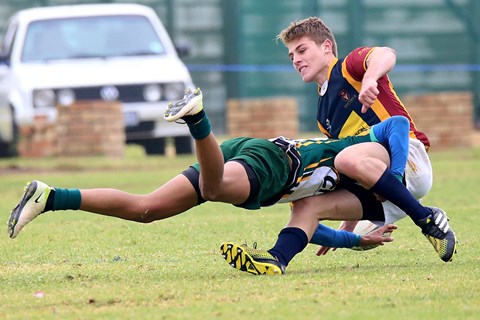Concussion compensation due to sporting injuries

Have you had an impact to your head while playing sport? You may have been hit with a ball during a game of cricket, tackled during AFL, tripped during soccer, or concussed during gridiron. Head injuries in sport can cause concussion leading to cognitive, physical and psychological injuries. If you’ve suffered concussion in sport, you may be entitled to compensation through a public liability claim.
What is concussion?
Concussion is one of the most severe injuries to happen to athletes and may lead to long-term and life-threatening conditions.
Chronic Traumatic Encephalopathy (CTE) is a brain disorder that is common after concussion and particularly repeated concussions. It causes the death of brain nerve cells. Symptoms of CTE include personality and behaviour changes, memory issues, blurred vision, dizziness, difficulty concentrating and confusion.
At this stage, guidelines have been put into place across a range of sporting codes to ensure that players who have been concussed are closely monitored and taken care of. Guidelines should also be in place regarding concussed players returning onto the field.
Please note that these guidelines may vary depending on the sport and club.
Compensation available for concussion injuries in sport
If you have sustained a concussion injury due to a sporting activity, you may be eligible to claim compensation.
Under the Wrongs Act 1958, a claim can be pursued for pain and suffering and economic loss.
Economic loss includes:
- rehabilitation and domestic care;
- medical expenses;
- lost income or wages.
The effect of voluntary assumption of risk in sporting injuries
When playing sports, there is an assumption that the athlete has a full awareness of the associated hazards of the game, including any associated risks to their health and well-being. It is assumed that the athletes know the risks involved and will willingly expose themselves when participating. By choosing to join in, they automatically accept any risk.
Although athletes have a voluntary assumption of risk, the sporting organisations also have a duty of care to their athletes. To be eligible for compensation due to concussion, the injured athlete needs to be able to prove that there is a duty of care owed to them by the sporting body and that the sporting body failed in its duty of care.
Duty of care owed to athletes by sporting organisations
Sporting bodies have a duty of care to those who are participating in the sport.
The safety of those involved in the game must be considered, and all reasonable steps must be taken to ensure that accidents and injuries do not occur.
Examples of reasonable steps include:
- ensuring that there is safety equipment, for example, protective clothing, helmets etc;
- ensuring there are medical personnel on standby during a game; or
- having concussion protocols in place so that they can be enforced when required.
If such precautions are not taken, the sporting body may have breached its duty of care and be deemed negligent. Proving negligence is a key factor in public liability claims.
Key requirements for a successful public liability claim
To be successful with a public liability claim due to concussion through sport, the following is required:
- You will need to show that your injury was as a result of someone else’s negligence;
- Your injury must be permanent;
- Your injury is stable (that is, unlikely to markedly improve or decline); and
- Your injury is deemed a “significant injury”.
How is negligence determined in personal injury claims?
Sporting bodies have a duty of care to their players. This means that they should take all foreseeable precautions to make sure that their players are safe. If your injury was caused due to their negligence, their duty of care has been breached, and therefore they may be liable for your injury.
In accordance with the Wrongs Act 1958 s48(1):
“a person is not negligent in failing to take precautions against a risk of harm unless:
-
- the risk was foreseeable (that is, it is a risk of which a person knew or ought to have known); and
- the risk was not insignificant; and
- in the circumstances, a reasonable person in the person’s position would have taken those precautions.”
When considering whether a person would have taken precautions to avoid any risk of harm occurring the following is considered:
-
- the likelihood of the harm occurring if care was not taken;
- the seriousness of the harm;
- the burden of taking precautions to avoid the risk of harm; and
- the activity that created the harm.
Meaning of a significant Injury
To be eligible for public liability compensation for pain and suffering, you must establish that you have a “significant injury”.
A significant injury is defined as a long-term injury or an injury that has had a significant impact on your life.
For an injury to be deemed significant it must be assessed by an independent medical examiner who will need to evaluate the degree of impairment as per the American Medical Association Guide. As per the guide, the whole person impairment scale is used to measure the degree of impairment a person has suffered due to the injury. This will determine the amount of compensation you are entitled to receive.
A significant injury is an injury that is assessed in accordance with the 4th edition of the American Medical Association Guides and meets:
- a 5% whole person impairment (WPI) or more for spinal injuries;
- a greater than 5% WPI for other physical injuries; or
- a greater than 10% WPI for psychological injuries.
Are there time limits to claim compensation due to concussion?
As per the Limitations of Actions Act 1958 (Vic) s27D, the statute of limitation (time limit) for a personal injury claim is 3 years from the date of which the cause of action is discovered, or 12 years from the date of the act which resulted in the personal injury.
Regarding a person under a disability, s27E states that the statute of limitation is 6 years from the date the cause of action is discoverable, or 12 years from the date of the act which resulted in the personal injury.
However, if you are outside the time limits to lodge your personal injury claim, you can apply to the Court for an extension of time. This is not automatically given, and the Court will consider your reasons for the delay. Applications for an extension of time should be well drafted. We recommend you seek legal advice prior to making such an application.
Get help from a personal injury lawyer
If you believe that you have suffered a sporting injury or concussion due to the negligence of a sporting body, Guardian Injury Law can advise you on your rights as an injured athlete and whether you are entitled to receive any compensation from the sporting organisation.
We provide free initial advice and run claims on a “no win, no fee” basis. So, it costs you nothing to find out where you stand.
Contacting Guardian Injury Law
📧 enquiries@guardianinjurylaw.com.au
Find this article useful or interesting?
You may also like to read:
This article is of a general nature and should not be relied upon as legal advice. If you require further information, advice or assistance for your specific circumstances, please contact Guardian Injury Law.
